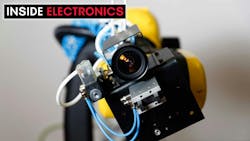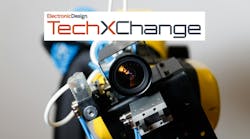Taking a Look at Machine Vision
What you’ll learn:
- The importance of vision in both human and machine systems.
- How advanced machine-vision systems can empower automation and robotics.
Numerous new application spaces are being opened up due to the advances in embedded technologies and their impact on the design of products. Developments like wide-bandgap power electronics and AI, which are effectively core elements of the muscle and brains in an electronic system, offer both opportunities and challenges to the product developer.
However, an important part of robotics and automation—machine vision—hasn’t come along as far as it could or should. Because its progression is a step behind, it has a lot of catching up to do.
If you think about human vision, or actually how most animals see the world, we have certain key capabilities that our machine-vision systems haven't developed as completely as needed. For example, more than 90% of the vision capability in an animal’s eyes is geared toward detecting motion. Our eyes don't even have to form an image to alert us that there’s motion in our vision area.
Traditional vision systems based on cameras focus more on image storage, not image processing. They certainly don't detect motion; you have to compare video frame-by-frame to figure out if something moves.
Companies like SiLC are developing solutions with the ability to see instantaneous motion and use that as a way of identifying trends, identifying the target for the most focused image and classifying and identifying objects. In this podcast, we talk to Dr. Mehdi Asghari, CEO of SiLC Technologies, about the state of the art in machine vision and what the company is doing in that space.
SHOW NOTES
00:39 – Advancement of Machine Vision
03:25 – Industrial Machine Vision
06:30 – Overcoming Challenges
07:31 – Supporting the Customer
08:57 – Next-Gen Products from SiLC
>>Check out these TechXchanges for more podcasts, and similar articles and videos
About the Author
Alix Paultre
Editor-at-Large, Electronic Design
An Army veteran, Alix Paultre was a signals intelligence soldier on the East/West German border in the early ‘80s, and eventually wound up helping launch and run a publication on consumer electronics for the US military stationed in Europe. Alix first began in this industry in 1998 at Electronic Products magazine, and since then has worked for a variety of publications in the embedded electronic engineering space. Alix currently lives in Wiesbaden, Germany.
Also check out his YouTube watch-collecting channel, Talking Timepieces.



